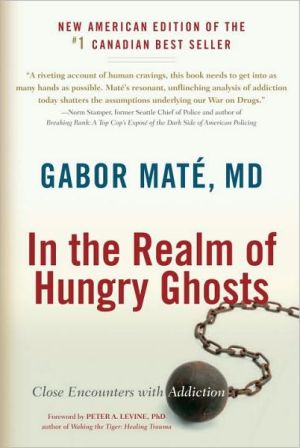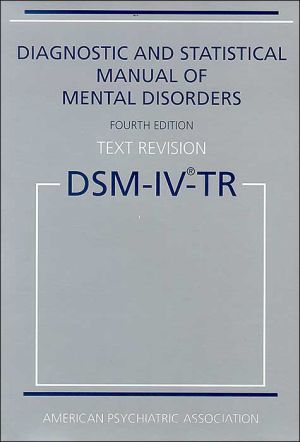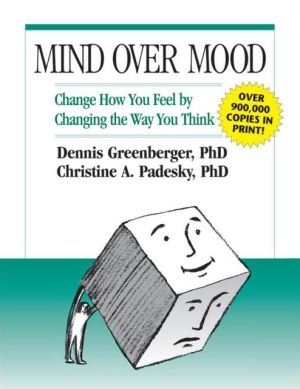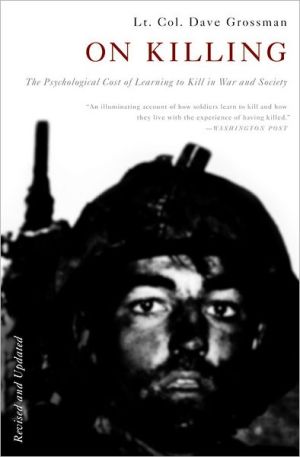Treating Traumatic Stress in Children and Adolescents: How to Foster Resilience Through Attachment, Self-Regulation, and Competency
Grounded in theory and research on complex childhood trauma, this book provides an accessible, flexible, and comprehensive framework for intervention with children and adolescents and their caregivers. It is packed with practical clinical tools that are applicable in a range of settings, from outpatient treatment centers to residential programs. Rather than presenting a one-size-fits-all treatment model, the authors show how to plan and organize individualized interventions that promote...
Search in google:
Grounded in theory and research on complex childhood trauma, this book provides an accessible, flexible, and comprehensive framework for intervention with children and adolescents and their caregivers. It is packed with practical clinical tools that are applicable in a range of settings, from outpatient treatment centers to residential programs. Rather than presenting a one-size-fits-all treatment model, the authors show how to plan and organize individualized interventions that promote resilience, strengthen child–caregiver relationships, and restore developmental competencies derailed by chronic, multiple stressors. More than 45 reproducible handouts, worksheets, and forms are featured; the large-size format facilitates photocopying. Biography Margaret E. Blaustein, PhD, is a practicing clinical psychologist whose career has focused on the understanding and treatment of complex childhood trauma and its sequelae. With an emphasis on the importance of understanding the child-, family-, and provider-in-context, her study has focused on identification and translation of key principles of intervention across treatment settings, building from the foundational theories of childhood development, attachment, and traumatic stress. With Kristine Kinniburgh, Dr. Blaustein is codeveloper of the Attachment, Self-Regulation, and Competency treatment framework. She has provided extensive training and consultation to providers and consumers within the United States, Canada, and Europe. She is currently the Director of Training and Education at The Trauma Center at Justice Resource Institute in Brookline, Massachusetts, and is actively involved in local, regional, and national collaborative groups dedicated to the empathic, respectful, and effective provision of services to this population. Kristine M. Kinniburgh, LICSW, is the former Director of Child and Adolescent Services at The Trauma Center at Justice Resource Institute in Brookline, Massachusetts. She is currently a practicing clinical social worker and organizational consultant, working with agencies to integrate trauma-informed and trauma-specific practices into all facets of service delivery. Over the past 15 years Ms. Kinniburgh has dedicated her practice to work with children and families affected by trauma in a range of settings including outpatient clinics, schools, residential programs and hospitals. Her clinical experience, broad in scope, inspired her to explore and subsequently identify core components of trauma-informed intervention that can be implemented in the array of treatment settings serving this population. Ms. Kinniburgh is the originator and codeveloper of the Attachment, Self-Regulation, and Competency treatment framework and is currently training and consulting on this framework with agencies across the United States and abroad.
IntroductionI. Overview1. The Developmental Impact of Trauma2. Child Development, the Human Danger Response, and Adaptation: A Three-Part Model for Understanding Child Behaviors3. The Attachment, Self-Regulation, and Competency Treatment FrameworkII. Attachment4. Caregiver Management of Affect5. Attunement6. Consistent Caregiver Response7. Building Routines and RitualsBeyond Attachment: The Role of the Caregiving System in Building and Supporting Regulation and CompetencyIII. Self-Regulation8. Affect Identification9. Modulation10. Affect ExpressionIV. Competency11. Strengthening Executive Functions12. Self-Development and IdentityV. Integration13. Trauma Experience IntegrationA PostscriptAppendix A. Provider MaterialsAppendix B. Caregiver Educational Materials and WorksheetsAppendix C. Group ActivitiesAppendix D. Youth Educational Handouts and WorksheetsAppendix E. Milieu-Systems MaterialsAdditional Resources
\ Journal of Mental Health"The book is a comprehensive, practical guide, taking the reader through an introduction of Developmental Trauma and the nine building blocks of the intervention....The toolbox for each chapter was illustrated with case examples and cultural and developmental considerations. The appendix includes over 45 handouts covering specific ideas and techniques for group activities, psycho-education, and worksheets for the young person and their care-givers. I found all of these resources really useful....The tips and ideas on developing therapy routines, and opening/closing activities with children would be helpful for all trainee clinical psychologists, as would many of the behavioural techniques....I would highly recommend [this book] to anyone interested in the field."--Journal of Mental Health\ \ \ \ \ From the Publisher"This is a comprehensive guide to effectively helping the innumerable children who have lost their way in the world as a result of terrifying experiences. Blaustein and Kinniburgh's highly practical methods for promoting self-regulation, safety, and competency make this book a landmark for understanding and treating traumatized children."--Bessel A. van der Kolk, MD, Medical Director, The Trauma Center; Professor of Psychiatry, Boston University School of Medicine "Written by gifted clinicians, this book presents one of the most helpful therapeutic approaches for complex childhood trauma. It describes the developmental consequences of trauma and provides specific techniques for resolving them. The book is filled with examples, exercises, handouts, worksheets, and therapeutic tools that allow the clinician to directly intervene in the child or adolescent's relational schemas, self-regulation difficulties, and subsequent dysfunctional behaviors. Highly recommended!"--John Briere, PhD, Departments of Psychiatry and Psychology, Keck School of Medicine, University of Southern California "This book moves beyond the developmentally limited diagnosis of PTSD to fully address the clinical complexity of traumatized children and families encountered in the real world. The authors, both experienced therapists, offer a detailed, theory-based treatment model supported by an array of pragmatic strategies and therapeutic suggestions. The depth and flexibility of this approach allow it to be translated to a wide range of settings in which traumatized children and their families are seen and served."--Frank W. Putnam, MD, Departments of Pediatrics and Psychiatry, Cincinnati Children's Hospital Medical Center "Provides a lucid theoretical synthesis and an eminently practical toolkit for psychotherapy with children and adolescents with PTSD and other traumatic stress disorders. The emphasis on attachment, self-regulation, and competency is unique. This is an invaluable resource for all therapists who work with children and adolescents, as well as therapists in training."--Julian D. Ford, PhD, Department of Psychiatry, University of Connecticut Health Center\ \








